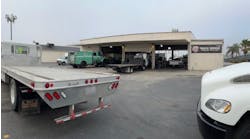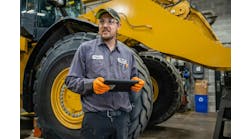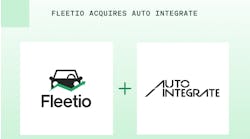Maintenance and reliability professionals are being asked to deliver like never before. Today's economic conditions demand greater levels of reliability and increased maintenance productivity with an ever-increasing focus on reducing costs. In order to survive, an organization's plans must turn to optimizing maintenance capacity as a means to achieve its goals.
Continuous improvement processes, such as Lean and its tools, have been the process of choice for most organizations over the past 10 years. Although the business sides of these companies realize tremendous improvements, oddly enough, many maintenance processes are left to be a part of someone else's Lean event, or are simply made "Leaner" as a result of having less than before.
There's no doubt the maintenance process eventually will be targeted for change through the revelation that maintenance cannot keep up with the reliability demand of a Leaned organization, thereby becoming a victim of Lean. On the other hand, a savvy organization can choose to proactively apply Lean tools to improve its process by design.
BUSINESS MOTIVATORS
Across the industry, we see three business motivators driving the need for improvement:
- Companies already impacted by market conditions that are trying to "survive" implemented decisions.
- Companies preparing for impending reductions.
- Companies which are unaffected by current market conditions but must remain competitive within their industry.
Although each of these motivators targets improvement for different reasons, the solution is common. Companies must open the flow of the maintenance process and improve capacity in order to survive.
TRADITIONAL VIEW
Among the reasons maintenance "bats in the cleanup spot" in the continuous improvement lineup is the traditional view held by many companies that a maintenance department is simply a "cost" to an operation. Thus, the only way to improve "cost" is to reduce it.
Additionally, many organizations are cutting what they consider to be Muda (the Japanese word for "waste") out of their maintenance budgets without necessarily making changes in how they operate. But doing so severely handicaps the maintenance organization's ability to ensure adequate reliability in equipment and processes, furthering the negative spiral.
In this scenario, there are even considerations of decentralization, which places maintenance at the place of concern to compensate for the absence of reliability.
WHAT IS LEAN MAINTENANCE?
First, Lean Maintenance is process improvement, not an outcome or consequence of cutting resources to keep up with external demands. Otherwise, maintenance will have appeared to achieve the goal of being Lean, but probably lack the effectiveness and efficiency required to sustain itself or deliver the value required by the environment at which it is applied.
Secondly, Lean Maintenance is, quite simply, the application of Lean techniques and tools to the maintenance process to drive out waste - anything within your process the end user would not be willing to pay for. The challenge is converting or translating already known elements of Lean into the maintenance process.
The most common elements of Lean can be applied to any process, including maintenance.
The Lean/Maintenance Conversion Chart (see Table 1) takes Lean elements and shows the maintenance equivalency in three primary areas of the maintenance process:
- The process overall focused on workflow and market demand.
- PM Optimization (PMO) to drive waste from the forecasted backlog.
- Planning and scheduling (P&S) optimization to drive waste from the existing ready backlog.
Table 1. Lean/Maintenance Conversion Chart
Identification of Value: Value Added Labor Hours - Measurement: Overall Maintenance Effectiveness (OME)
Lean Tool Overall Maintenance Process Forecasted Backlog: PM Optimization (PMO) Existing Backlog: Planning & Scheduling (P&S)
Products, Processes and Demand Backlog analysis
Work type analysis
Value Stream Mapping Process mapping by work type Current state mapping
Future state mapping Current state mapping
Future state mapping
Loss Identification PMO case study CM (Corrective Maintenance) ride along
5S:
Sort
Straighten
Shine
Standardize
Sustain Maintenance work centers/Parts crib Sort unnecessary PM from system
Organize PM to component level
Application of 14 PMO techniques
PMO checklist/Process assurance
Task and failure analysis Priority, screening and justification
Backlog management
Planning process (Muda removal)
P&S checklist/Process assurance
Planning compliance evaluations
Kanban Strategies Scheduling
Backlog management Running/Down PMs
PM routes Weekly labor allocation
Daily schedule
MOE meetings
TPM (Total Productive Maintenance) MOE (Maintenance of effort) partnership Operations daily upkeep Work requests/Work ID
OEE (Overall Equipment Effectiveness) OME
Takt Time Work order cycle time MTTR (mean time to repair)
Planning compliance
HOW TO GET STARTED
In order to apply Lean principles, we must agree that maintenance is indeed a process, rather than an event. As a process, preventive, predictive, corrective, reactive, project, production support, etc., can have different value streams. Therefore, they must be addressed individually, much the same as different products in the production value stream.
In their 1996 book, Lean Thinking, James P. Womack and Daniel T. Jones defined five basic principles that characterize Lean. These basic principles should be applied for each product or product family.
Principle 1 - Specify value in terms of the end user.
The end user of the value provided by maintenance can be defined either as the entity that requires the equipment to operate, or as the end user of the product being made by the equipment. It doesn't matter because the required behavior should be the same. The value typically can be defined as work performed in order to attain the required level of reliability of the organization's equipment.
Naturally, not all work performed will provide the same level of value. Consequently, work must be prioritized based on the criticality of the equipment to the operation, as well as its impact on safety, the environment and production throughput.
In maintenance, this value is produced via the throughput (transaction) of applied labor hours. This is the "product." Questions around this product can include:
- Of the 40-hour work week, how many hours are converted into throughput and how many remain as untapped inventory in our system?
- What is the market demand for these hours (backlog analysis)?
- What is the productivity in making my product? (Average productivity in maintenance is 25 percent.)
- What are the things eating up the remaining output?
Principle 2 - Identify all steps in the value stream and eliminate those that do not add value.
First, create a Current State Value Stream Map (VSM), considering each maintenance work type. Identify all steps and determine which add value and which do not. Of those that do not add value, some will be easy to eliminate immediately, whereas others might require other changes and resources prior to elimination.
Next, create a Future State VSM, indicating the non-value-added steps removed. This is one of the major opportunities for waste elimination/minimization.
The VSM also provides other benefits:
- Visualizes waste. Creates a sense of urgency to eliminate non-value-added activities as most waste is considered "part of our jobs" or "just how it is here."
- Helps standardize how work is done, yielding consistent results.
- Helps show others outside of maintenance what goes on in the seemingly "black hole" of maintenance.
- Shows others where maintenance requires their involvement in the maintenance and reliability process.
As shown in Figure 1, Waste (Muda) Identification, one of the most effective methods for performing a VSM for maintenance is to participate in standardized ride-along exercises. These physically trace a job from start to finish, documenting all steps and times captured for each, with the exception of actual work times. Estimates are fine, as the emphasis is on the Muda "around" the job, not questioning the craft skills within the job.
It is important to understand that this is not a time study, and the exercise must be preceded by educational materials that convey the point that the Muda is a reflection of the process, not the worker.
Principle 3 - Make the remaining steps flow smoothly.
Once identified, Muda that is preventing optimum flow must be removed, but in an order that maximizes labor without consuming it, as it is easy to become overwhelmed by the opportunities uncovered by the VSM activities. At this stage, it is important that the productivity of the system be measured to document improvements to the system.
- Measuring Flow. In production it is easy to measure the equipment generating output. In maintenance, however, this presents a unique challenge. The elusive "wrench time" has been the Holy Grail of maintenance - regularly discussed but never captured since resistance to self-incrimination is a human trait.
Whereas OEE (Overall Equipment Effectiveness) measures loss in equipment, OME (Overall Maintenance Effectiveness) measures loss within the maintenance process - not the worker - and can trend the impact of improvements (see Table 2, OEE vs OME).
Table 2. OEE vs OME
OEE (Overall Equipment Effectiveness) in Lean OME (Overall Maintenance Effectiveness) in Maintenance
Availability Utilization/Scheduling Compliance
Breakdowns
Set up/Change over Not on jobs
Undocumented work
Performance Planning Compliance
Idling minor stoppages
Reduced rate Idling minor stoppages
Actual vs plan
Quality Quality
Start-up yield
Scrap or rework Start-up loss
Callbacks
Again, don't be surprised if the initial OME averages 25 percent of the overall process. The OME typically reveals types of backlog loaded with Muda - undocumented backlog, i.e., reactive maintenance cannot be addressed until capacity improves, otherwise these efforts become additive making the forecasted backlog and ready backlog target-rich areas where Muda hides.
- Forecasted Backlog. This is the part of the backlog that is always known in advance, typically including preventive maintenance (PM) and predictive maintenance (PdM). Because these tasks are recurring, there is a significant opportunity for waste elimination or minimization using a process of PM Optimization (PMO).
This is a series of 14 techniques that are analogous to the application of 5S (a Lean concept used to create a clean, orderly environment where there is a place for everything and everything is in its place) to PM and PdM tasks, typically yielding:
- 40 percent reduction in PM labor hours.
- 35 percent reduction in scheduled downtime.
- 50 to100 percent increase in PM coverage.
PMO utilizes Lean tools itself by incorporating waste removal in Phase 1, initial optimization through an application of four of the 5S components to the PM data, as well as the identification defects in the PM; Phase 2, task pass/ fail analysis; and Phase 3, equipment reliability analysis which provides the sustainment aspect of the 5S as the PM program is now dynamic.
- Ready Backlog. This is the part of the backlog that is already documented, minus forecasted PM work. It usually includes corrective projects and carryover jobs. Based on the ride-along studies, Muda identified are evidence for planning optimization.
From various stages of starting planning to dialing in an existing effort, organizations can realize:
- 50 to100 percent reduction in work order cycle time.
- Minimized spare parts time and costs.
- Minimized scheduled downtime as shorter cycle times are applying quick change over disciplines.
Principle 4 - Have the customer pull value from the previous upstream activity.
Having the customer pull value from the process is comparable to not performing work before it is required. It is frightening to see how many organizations think of backlog as a bad thing. They see this work as being overdue.
Allowing work to accumulate in the backlog for a reasonable amount of time provides several benefits, including:
- Providing more time to plan the jobs, assuring all resources are available and ready prior to the work commencing.
- Enabling more efficient scheduling of work.
- Allowing work to be completed based on the importance to the organization via work priority and equipment criticality.
- Eliminating backlog that is usually indicative of a highly reactive maintenance organization. In these cases, more work exists than what is known and documented in the backlog. It is just not addressed until it fails.
Principle 5: Pursue perfection though continuous improvement.
As with anything, the goal must be to continuously improve against your key performance indicators (KPI). However, once a process is documented, particularly one as intangible as maintenance, it becomes easier to make adjustments that can be leveraged across the organization.
With a documented plan, and using the exact tools in other areas of the operation, it becomes easier to communicate the maintenance process, ensuring less chance that performance will slide back to what it was prior to the improvements.
SURVIVE TO THRIVE
By removing Muda in the maintenance process through proven Lean techniques, work order cycle time is forecasted and ready backlog is reduced, driving the need for optimized scheduling to fill smaller windows of availability. This cause and effect scenario demonstrates a dynamic process where true continuous improvement can be pursued.
Although you can find most companies already working on "pockets of excellence" driven by local need - such as planning and scheduling, PMs and work order systems, true systemic strength comes not from activity-based improvement, but from a holistic solution focused on flow.
The identification, measurement improvement and analysis of maintenance’s true commodity - applied (value-added) labor hours - is the key. That's because the powerful combination of these tools in the correct order will almost double the flow of the maintenance system without increasing individual performance. This untapped capacity is the key to survival.



